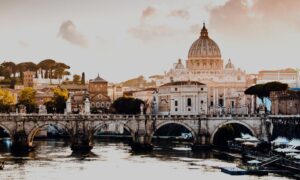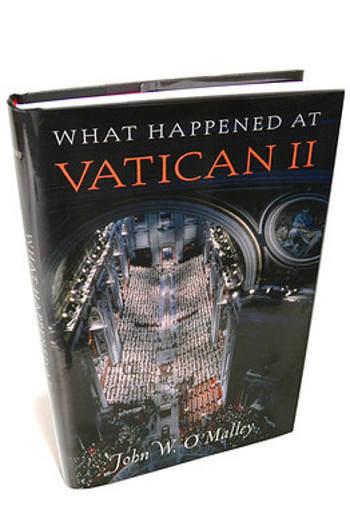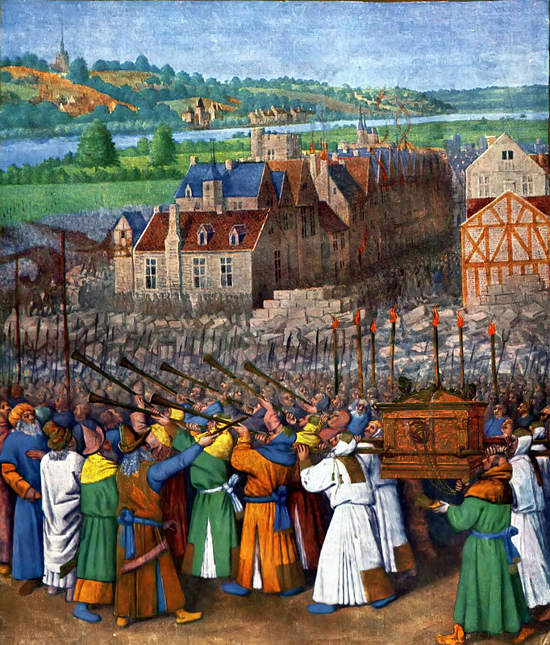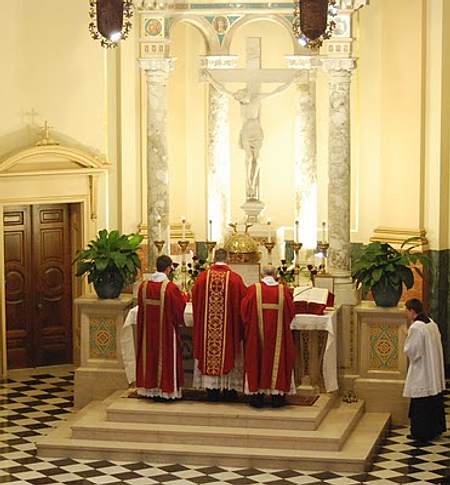Synspunkter på moderne bibelstudier
Jeg har begynt (som jeg lovet) å se litt mer på katolske bibelstudier i nyere tid, og jeg har begynt ved å se på to dokumenter. Det ene er et grundig dokument fra den pavelige bibelkommisjonen fra 1994 (som man kan lese bl.a. her), og det andre (hold dere fast) er et foredrag kardinal Ratzinger holdt om bibeltolkning i vår tid, i New York i 1988 – som kan leses i sin helhet her. (Jeg (og denne bloggen) blir av og til anklaget for å være for konservativ, til og med reaksjonær. Ofte kommer slike anklager fordi folk blander sammen mine innlegg her med andre personers kommentarer, mens andre ganger er det også mine egne synspunkter andre finner upassende eller urimelige. Vel, man kan ikke gjøre alle til lags. Men jeg ber i alle fall ikke om unnskyldning for å videreformidle kardinal Ratzingers/ pave Benedikts synspunkter, og gi dem min fulle tilslutning!)
Foredraget jeg nå skal se litt på er: Biblical Interpretation in Crisis: The 1988 Erasmus Lecture Every year the Institute on Religion and Public Life, publisher of First Things, sponsors the Erasmus Lecture in New York City. In 1988, that lecture was delivered by Joseph Cardinal Ratzinger, now Pope Benedict XVI.
Ratzinger begynner med å beskrive de nye mulighetene som åpnet seg for en fri bibeltolkning:
Within that newfound freedom of thought into which the Enlightenment had launched headlong, dogma or church doctrine appeared as one of the real impediments to a correct understanding of the Bible itself. But freed from this impertinent presupposition, and equipped with a methodology which promised strict objectivity, it seemed that we were finally going to be able to hear again the clear and unmistakable voice of the original message of Jesus. Indeed, what had been long forgotten was to be brought into the open once more: the polyphony of history could be heard again, rising from behind the monotone of traditional interpretations. As the human element in sacred history became more and more visible, the hand of God, too, seemed larger and closer.
Men ganske snart dukket problemene opp:
Gradually, however, the picture became confused. The various theories increased and multiplied and separated one from the other and became a veritable fence which blocked access to the Bible for all the uninitiated. Those who were initiated were no longer reading the Bible anyway, but were dissecting it into the various parts from which it had to have been composed. The methodology itself seems to require such a radical approach: it cannot stand still when it scents the operation of man in sacred history. It must try to remove all the irrational residue and clarify everything. Faith itself is not a component of this method, nor is God a factor to be dealt with in historical events. But since God and divine action permeate the entire biblical account of history, one is obliged to begin with a complicated anatomy of the scriptural word. On one hand there is the attempt to unravel the various threads (of the narrative) so that in the end one holds in one’s hands what is the “really historical,” which means the purely human element in events. On the other hand, one has to try to show how it happened that the idea of God became interwoven through it all. So it is that another “real” history is to be fashioned in place of the one given. Underneath the existing sources–that is to say, the biblical books themselves–we are supposed to find more original sources, which in turn become the criteria for interpretation. No one should really be surprised that this procedure leads to the sprouting of ever more numerous hypotheses which finally turn into a jungle of contradictions. In the end, one no longer learns what the text says, but what it should have said, and by which component parts this can be traced back through the text. … …
Jeg fortsetter med å se på dette dokumentet om ikke lenge.



